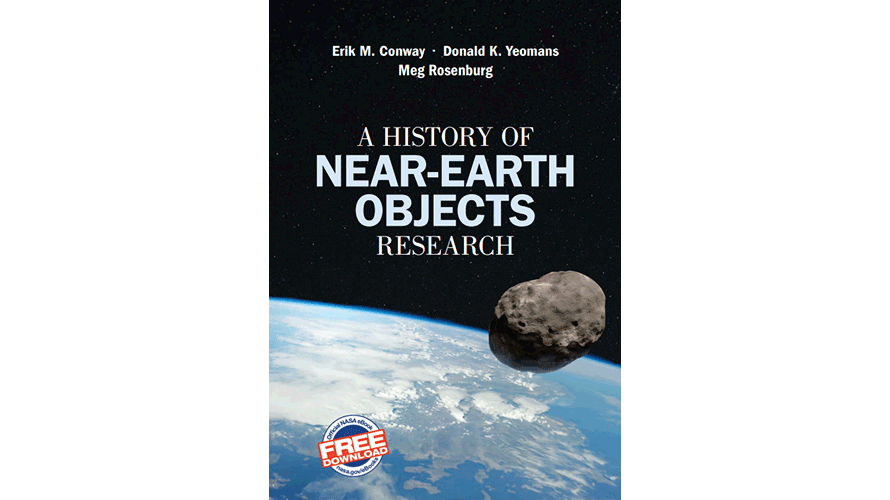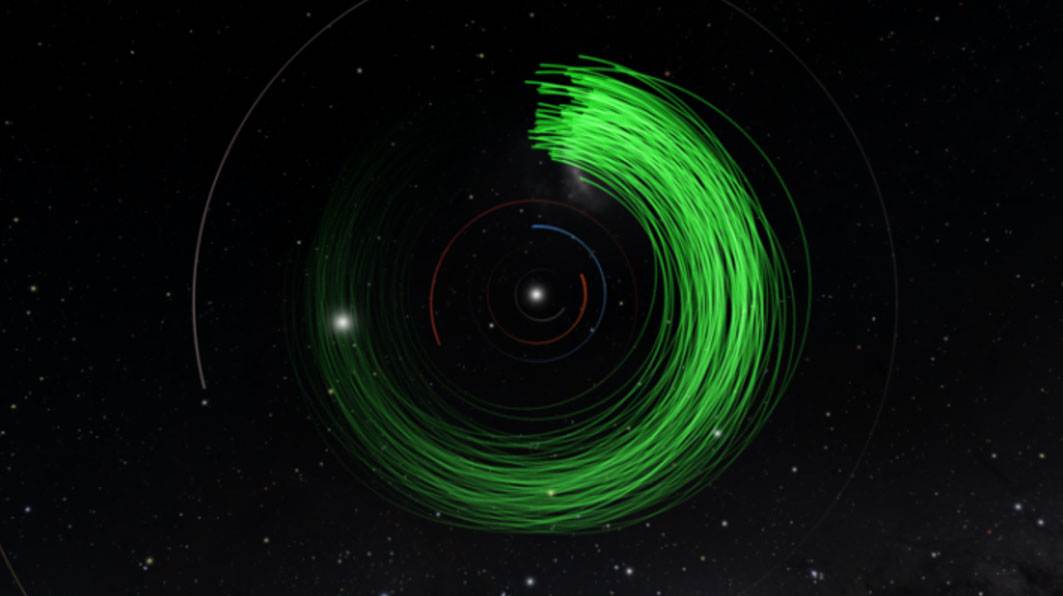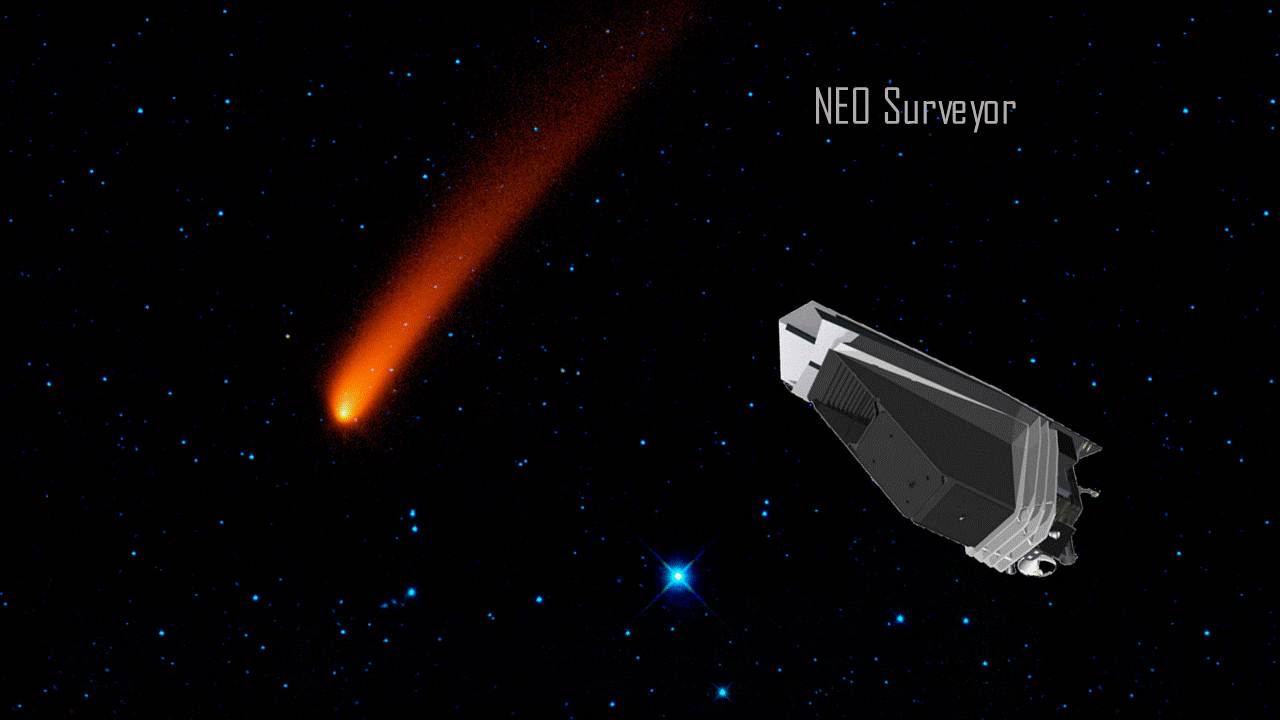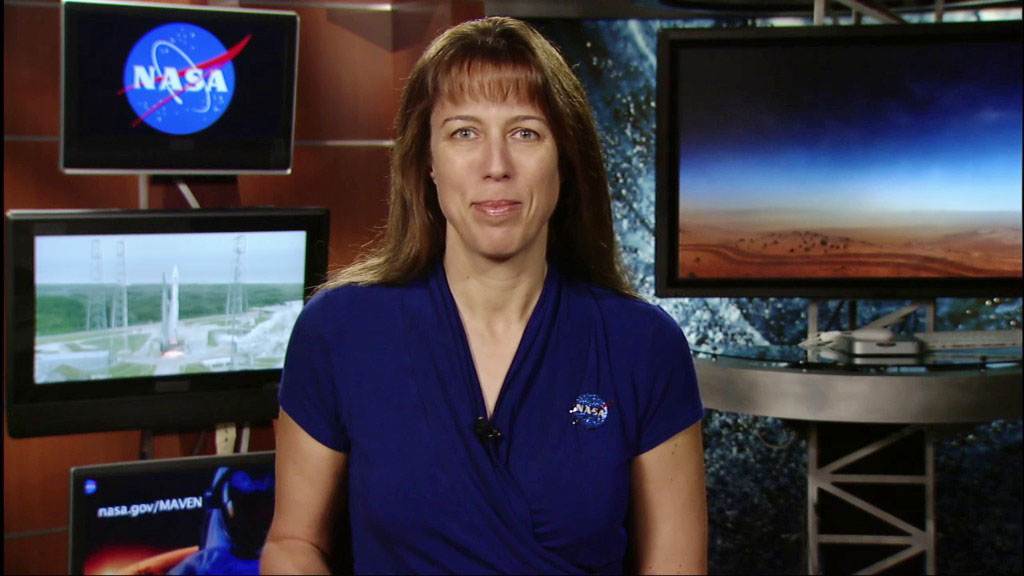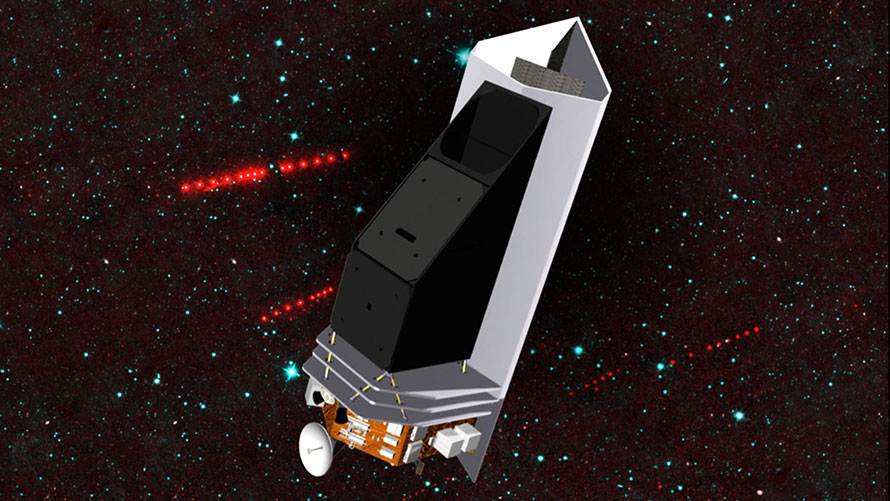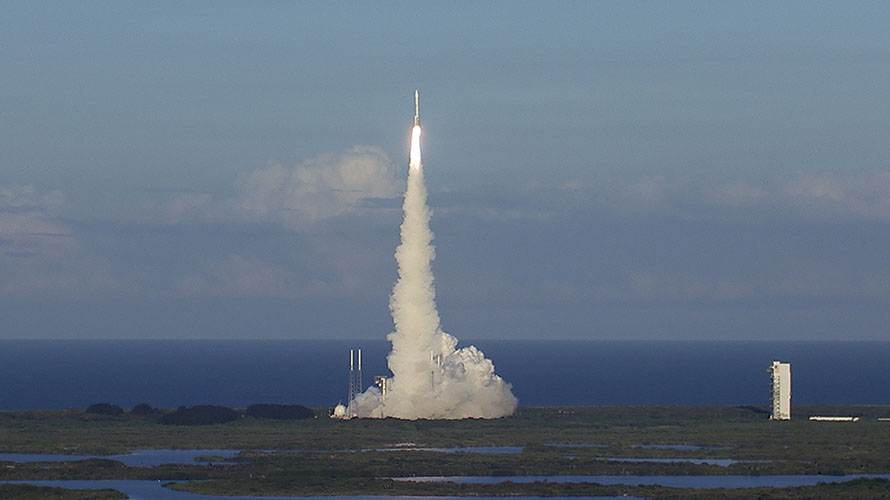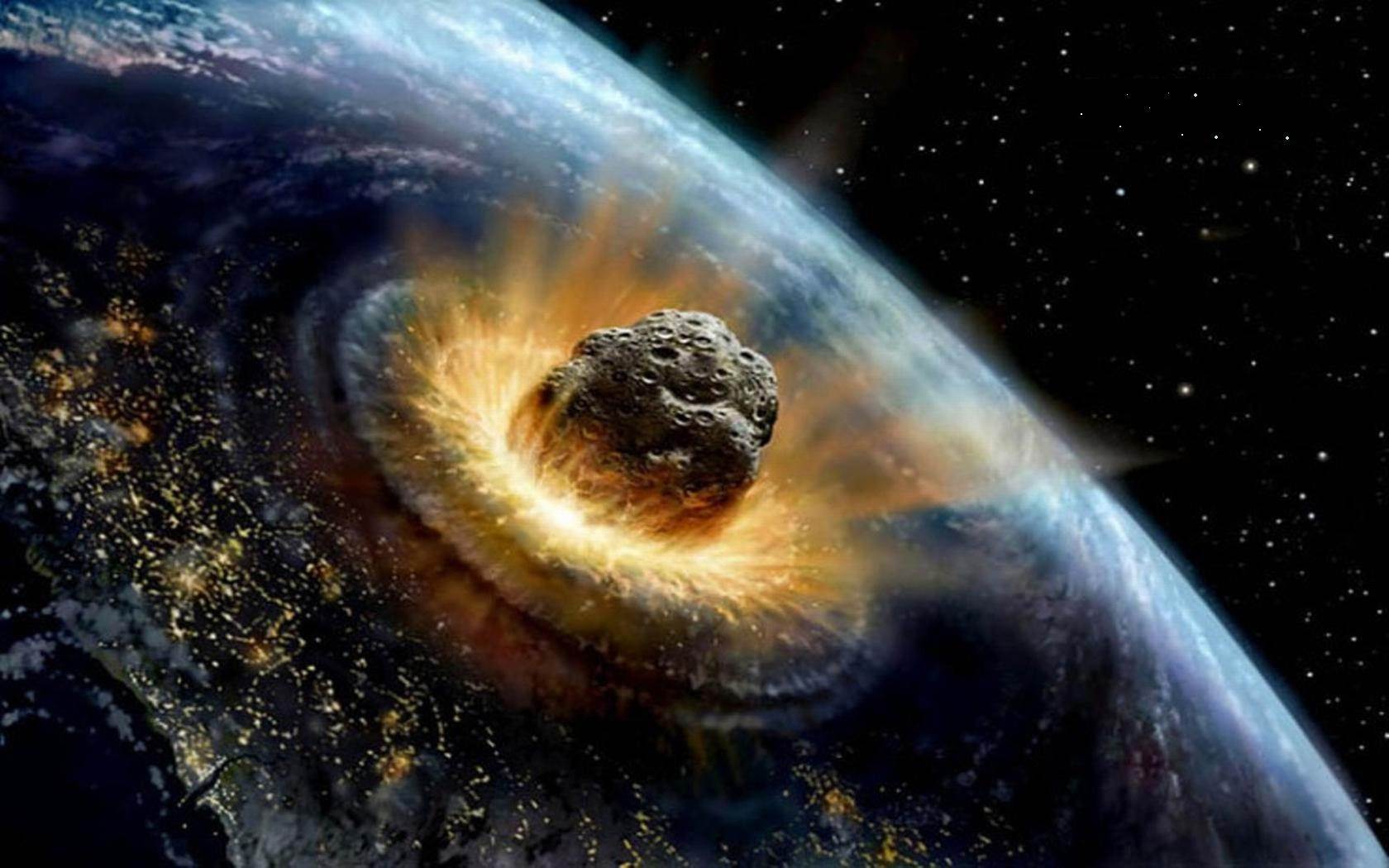Planetary Defense
The Earth is silently but continuously threatened by near-Earth objects—asteroids—some of which we will not spot until it is too late.The National Space Society works tirelessly to urge Congress to address these potential Earth-wrecking objects, but much remains to be done. You can make a donation to help protect our planet at go.nss.org/defendearth.
There are two things you need to know about asteroids:
- Asteroids can make us extinct (the threat)
- Asteroids can make us rich and provide homes for trillions of people (the promise — see Asteroids)
Following the success of NASA’s Double Asteroid Redirection Test mission that changed the orbit of asteroid Dimorphos, the top mission priority for planetary defense is the Near-Earth Object Surveyor telescope, or NEO Surveyor. To defend the Earth we must find asteroids before they find us!
The Threat
If we don’t do something, sooner or later Earth will be hit by an asteroid large enough to kill all or most of us. That includes the plants and animals, not just people. Maybe this won’t happen for millions of years. Maybe in 15 minutes. We don’t know.
We have been warned.
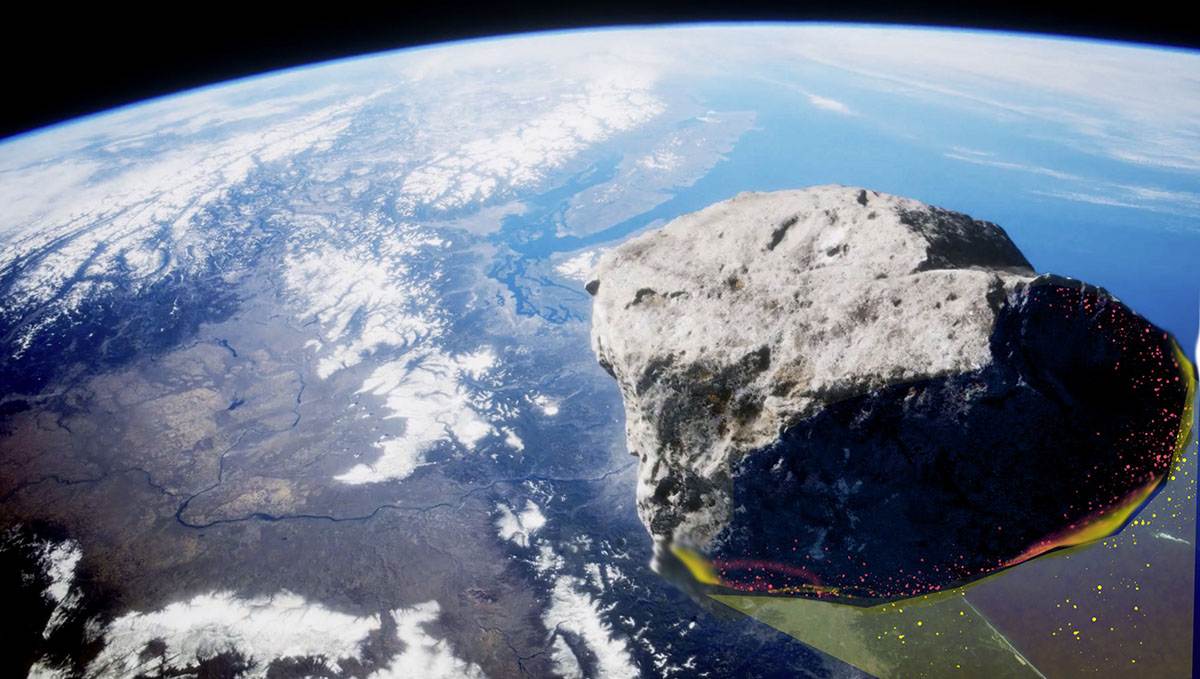
Recent Impacts
On 15 February 2013 the Chelyabinsk meteor entered Earth’s atmosphere over Russia. The object was undetected before its atmospheric entry, in part because its source direction was close to the Sun. Its explosion caused about 1,500 people to be injured seriously enough to seek medical treatment.
On 23 March 1989, asteroid 1989FC (with the potential impact energy of over 1000 megatons, roughly the equivalent a thousand of the most powerful nuclear bombs) missed Earth by about six hours [Freedman 1995]. We first saw this fellow after closest approach. If 1989FC had come in six hours later most of us would have been killed with zero warning. We are hit by thousands of smaller asteroids every year and we don’t see any of them before the collision.
Significant Impacts
In 1908 a small asteroid (perhaps 50 meters across) hit Tunguska, Siberia and flattened 60 million trees. That asteroid was so small it never even hit the ground, just exploded in mid-air. If it had arrived four hours and fifty-two minutes later it could have hit St. Petersburg [Lewis 1996b]. At the time St. Petersburg was the capital of Russia with a population of a few hundred thousand. The city would have ceased to exist. As it was, dust from the blast lit up the skies of Europe for days. Asteroid strikes this size probably happen about once every hundred years. However, this is just an average. Just because we got hit once doesn’t mean we’re safe for another hundred years. Indeed, there was another Tunguska-class strike in the Brazilian rain forest on 13 August 1930 [Lewis 1996b].
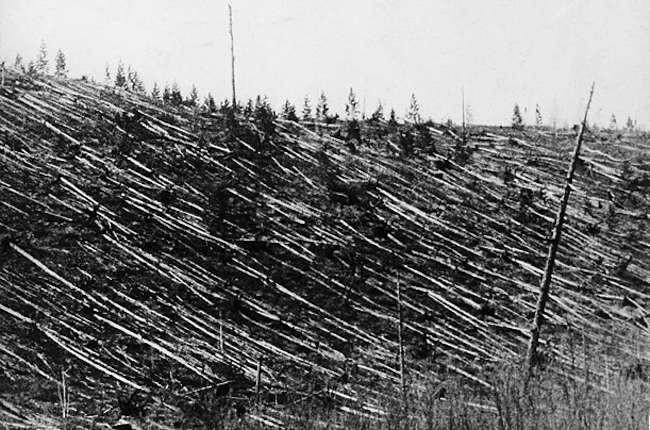
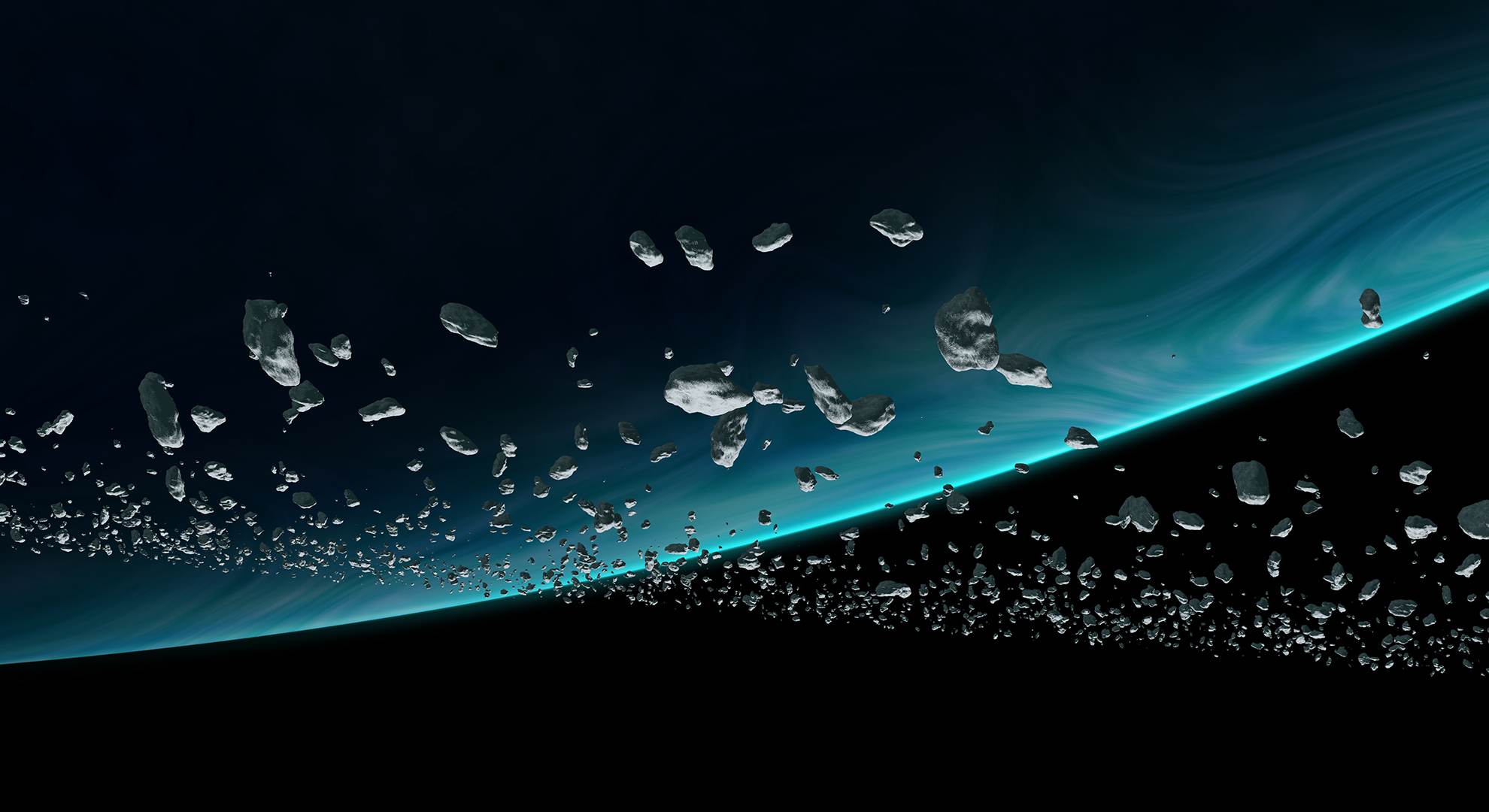
We Are Surrounded by Asteroids
There are about 1,000 asteroids a kilometer or more in diameter that cross Earth’s orbit (the path Earth takes around the Sun). About a third of these will eventually hit Earth [Lewis 1996a]. An asteroid strike this large can be reasonably expected to kill a billion people or so, depending on where it hits. A strike in China or India would kill more, in Antarctica less. Even a strike in the ocean would create a tsunami so enormous most people living near the coast would be drowned. A strike of this size is expected about once every 300,000 years or so.
It’s Not Just Earth
In 1178 our Moon was hit by an asteroid creating a 120,000 megaton explosion (about six times the force of Earth’s entire atomic arsenal). The collision dug a 20 km (12 mile) crater. This strike was recorded by a monk in Canterbury, England. We are extremely lucky it didn’t hit us. The Moon is a smaller target and has much less gravity to attract an impactor. If a 120,000 megaton blast had hit the Earth our history would have been dramatically different. We’re just lucky that one hit the Moon instead.
A recent large strike also missed Earth. In July 1994 the comet Shoemaker-Levy 9 plowed into Jupiter. The comet broke up into roughly 20 large pieces before contact, but when the pieces hit they left a string of enormous explosions clearly visible to our telescopes. The scale of the destruction was staggering. Each impact was the equivalent of about 10 million megatons of TNT.
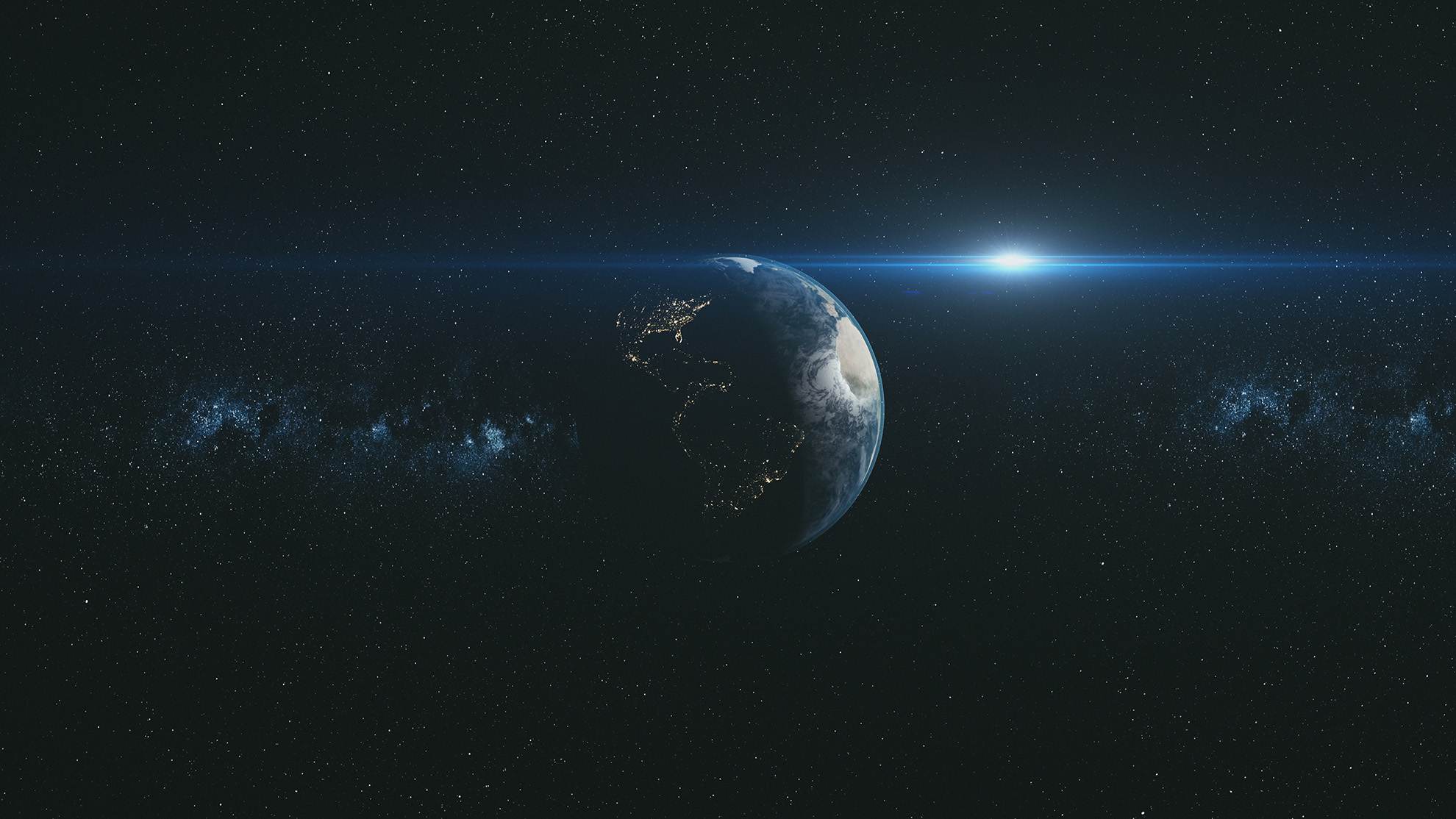
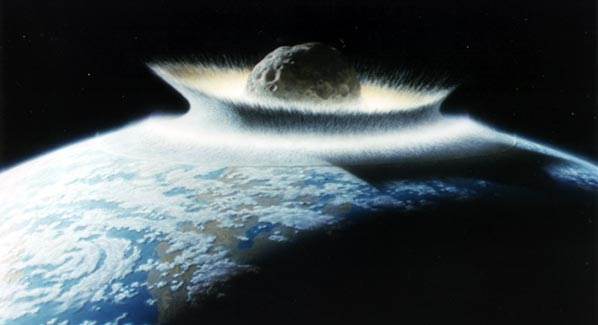
The Most Impactful Asteroid
Sixty-five million years ago a huge asteroid several kilometers across slammed into the Yucatan Peninsula in Mexico. This is the event that caused the extinction of the dinosaurs (and many other species). The explosion was the equivalent of about 200 million megatons of dynamite, about the equivalent of all 20 pieces of Shoemaker-Levy. The blast turned the air around it into plasma — a material so hot electrons are ripped from the atomic nucleus and molecules cannot exist. This is the stuff the Sun is made of. Enormous quantities of red-hot materials were thrown into space, most of which rained down worldwide burning literally the entire planet to a crisp. Anything not underground or underwater was killed. This scenario has been repeated over and over, perhaps once every 100 million years or so. Each collision killed up to 95% of all species on Earth. As many as two-thirds of all species that ever existed may have been terminated by asteroids hitting the Earth.
Detect & Divert
We know about the asteroid that killed the dinosaurs because we found the crater. But what happens when an asteroid hits the ocean? After all, oceans cover two-thirds of the Earth’s surface, and most asteroid strikes are in water. Unless the asteroid is very large there won’t be a crater. However, if you drop a rock into a lake it makes waves. The larger the rock the bigger the wave. Drop a 400 meter (four football fields) diameter asteroid into the Atlantic Ocean and you get a tsunami 60 meters (yards) high [Willoughby and McGuire 1995].
The only way to eliminate the threat of asteroids is to detect them and divert them. Right now we depend on a trickle of government funding for this. Detection of Earth-threatening rocks is very far from complete. At the present rate it will take years before we find just 90% of them.
A vigorous space settlement civilization based on asteroidal materials would have enormous economic incentives to find and utilize every asteroid passing anywhere near Earth.

They would be found, diverted, and mined for their materials. This would defuse the threat, make an awful lot of people extremely rich, and provide lovely homes to even more people.
For additional detailed information, see the NSS Planetary Defense Library.
Detect & Divert
We know about the asteroid that killed the dinosaurs because we found the crater. But what happens when an asteroid hits the ocean? After all, oceans cover two-thirds of the Earth’s surface, and most asteroid strikes are in water. Unless the asteroid is very large there won’t be a crater. However, if you drop a rock into a lake it makes waves. The larger the rock the bigger the wave. Drop a 400 meter (four football fields) diameter asteroid into the Atlantic Ocean and you get a tsunami 60 meters (yards) high [Willoughby and McGuire 1995].
The only way to eliminate the threat of asteroids is to detect them and divert them. Right now we depend on a trickle of government funding for this. Detection of Earth-threatening rocks is very far from complete. At the present rate it will take years before we find just 90% of them.
A vigorous space settlement civilization based on asteroidal materials would have enormous economic incentives to find and utilize every asteroid passing anywhere near Earth.
They would be found, diverted, and mined for their materials. This would defuse the threat, make an awful lot of people extremely rich, and provide lovely homes to even more people.
For additional detailed information, see the NSS Planetary Defense Library.

Planetary Defense Blog Posts
Category: Nonfiction Reviewed by: Casey Suire Title: A History of Near-Earth Objects Research Authors: Erik M. Conway, Donald K. Yeomans, and Meg Rosenburg NSS Amazon
By Robin Scott Image: Visualizing the trajectories through the solar system of asteroids discovered by ADAM. Credits: B612 Asteroid Institute, University of Washington DiRAC Institute,
The Urgently Needed NEO Surveyor Spacecraft to Detect Dangerous Asteroids Gets Political Boost Image: NASA’s NEO Surveyor spacecraft will identify and characterize asteroids and comets
The National Space Society and Planetary Society Issue Joint Statement on the Urgent Need to Fund Planetary Defense The National Space Society, based in Washington,
The NSS Campaign to Save NEO Surveyor (Near-Earth Object Surveyor Mission) By Jonathan Dagle, NSS Planetary Defense Program Manager Asteroids have been striking the Earth
By Robin Scott Image: Dr. Kelly Fast, NASA’s Near-Earth Object (NEO) Observations Program Manager (courtesy NASA) Inspired by the recent NASA Double Asteroid Redirection Test
On September 25, the National Space Society delivered a letter (image below) to NASA Administrator Bridenstine congratulating him and his Science Mission Team for creating
The National Space Society (NSS) applauds NASA Administrator Jim Bridenstine’s April 29th endorsement of building and operating an orbiting infrared telescope, NEOCam, to detect and
With the successful launch of a United Launch Alliance Atlas 5 411 on September 8 at 7:05 PM EST, 2016 from Space Launch Complex 41
On February 15, 2013, a meteor exploded over the Chelyabinsk region of Russia. The blast damaged over 7,000 buildings and almost 1,500 people suffered injuries
Planetary Defense Links
Planetary Defense Papers
- NSS Planetary Defense Library
- 2017 Planetary Defense Conference Summary
- 2007 Planetary Defense Conference (Summaries)
- 2004 Planetary Defense Conference – White Papers, Presentations
- Hearings on Near-Earth Objects before the U. S. House of Representatives Committee on Science and Technology
- B612 Foundation – Chaired by astronaut Rusty Schweickart, this foundation aims to develop the technology to divert asteroids from a collision course with Earth.
- Reports of the Association of Space Explorers Committee on Near-Earth Objects
- The Comet/Asteroid Impact Hazard: A Systems Approach. Clark R. Chapman, Daniel D. Durda, and Robert E. Gold. Southwest Research Institute White Paper, February 24, 2001 [PDF 19 pages]
Planetary Defense – Web pages
- 2-minute video message from NSS about Planetary Defense
- A Ride with Earth – Animation showing the Earth in relation to objects within 20 million kilometers for the year beginning July 2007.
- Asteroid and Comet Impact Hazards – NASA Ames Research Center
- Asteroid Watch – Jet Propulsion Laboratory
- NASA Near Earth Object Program – Current Impact Risks
- Panoramic Survey Telescope & Rapid Response System (Pan-STARRS) – University of Hawaii program to detect dangerous asteroids.
- Mitigation of Hazardous Comets and Asteroids – Description of technical book edited by Michael J. S. Belton et. al. Cambridge University Press, 2004, 436 pages.
- Earth Impacts Effects Program – interactive web site from the Lunar and Planetary Laboratory of the University of Arizona, used for estimating the regional environmental consequences of an impact on Earth.
- Lifeboat Foundation – Asteroid Shield
- Gaia Shield
- SpaceGuard Centre UK
- Ways to Mitigate or Prevent Very Bad Planet Earth Events, by astronaut John W. Young
- Environmental Damage from Asteroid and Comet Impacts
- Tsunami from Asteroid/Comet Impacts
- Fair Warning, Deadly Response: The Asteroid Threat, Ad Astra, Fall 2007
References
[Freedman 1995] George Friedman, “The Increasing Recognition of Near-Earth-Objects (NEOs),” Space Manufacturing 10: Pathways to the High Frontier, Proceedings of the Twelfth SSI-Princeton Conference, 4-7 May 1995, edited by Barbara Faughnan, American Institute of Aeronautics and Astronautics (AIAA), pages 157-164.
[Lewis 1996a] J. S. Lewis, Mining the Sky: Untold Riches from the Asteroids, Comets, and Planets, Helix Books, Addison-Wesley Publishing Company, Inc. [Review] [Buy from Amazon]
[Lewis 1996b] J. S. Lewis, Rain of Iron and Ice: The Very Real Threat of Comet and Asteroid Bombardment, Helix Books, Addison-Wesley Publishing Company, Inc. [Buy from Amazon]
[Willoughby and McGuire 1995] Allan J. Willoughby and Melissa L. McGuire (1995), “Adroitly Avoiding Asteroids! Clobber, Coax or Consume?” Space Manufacturing 10: Pathways to the High Frontier, Proceedings of the Twelfth SSI-Princeton Conference, 4-7 May 1995, edited by Barbara Faughnan, American Institute of Aeronautics and Astronautics (AIAA), pages 103-113.

